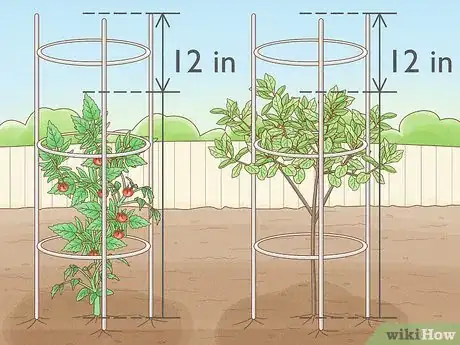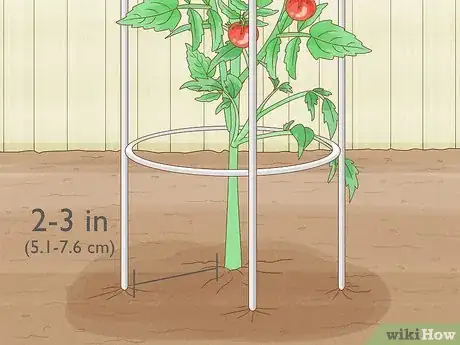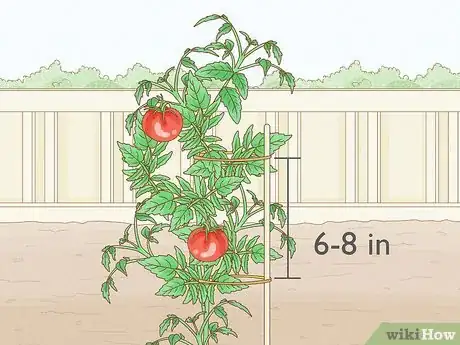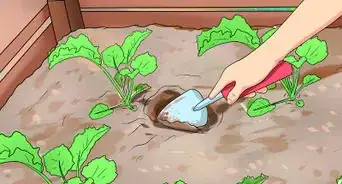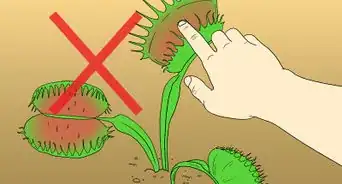X
wikiHow is a “wiki,” similar to Wikipedia, which means that many of our articles are co-written by multiple authors. To create this article, volunteer authors worked to edit and improve it over time.
This article has been viewed 68,204 times.
Learn more...
Sometimes plants can withstand the elements on their own, while others may need help standing up and thriving. Plants may move too much in the wind or are too heavy to stay off the ground. The main purpose for staking plants is to provide support for the plants, whether they're flowers or vegetables. In order to know how to stake a plant correctly, you must know the growth rate of the plants and the type of weather conditions the plants may encounter.
Steps
-
1Determine the size and amounts of plant stake you need. If you have a fast-growing plant, you may need to re-stake them every few months. Consider how large the plant will be in a year, and stake accordingly. The stake should be about 12 inches (30.5 cm) higher than the plant. Additionally, if your plant is in an area that doesn't suffer from strong winds, you may be able to use 1 to 2 stakes. For gustier winds, plan for at least 3 stakes.[1]
- If you're using wooden stakes, make sure the wood is left untreated. Stains or paints on the wood may contain chemicals that can leach into the soil.
- Reusable garden stakes are a long-lasting option and fold easily for winter storage. Ideal for vegetable plants, these stakes might come in L shapes and hook closely together to make whatever size you desire.
-
2Strike the stake about 2 to 3 inches (5.1 to 7.6 cm) away from the plant's stem into the ground by using a hammer or mallet. Place the stake at an angle to offer additional support to the plant.[2]Advertisement
-
3Secure the stake to the plant with non-wired plant ties, nylon stockings, or strong wool. You should use a figure-8 loop to allow the plant to move without scratching or rubbing the stem. You can use the same method for more than 1 stake.[3]
-
4Check on your plants regularly, and apply additional ties when the plans grow. Add the ties about 6 to 8 inches (15.2 to 20.3 cm) apart. Make sure you secure the tie to the stake and not the plant. All of the branches may be gathered at a single stake near the plant's center to provide additional support.[4]
Advertisement
Community Q&A
-
QuestionI have two rose bushes that are leaning heavily because of the four inches of rain we got overnight. There was a little bit of leaning from a lot of wind, also. Will I have to stake them?
 Community AnswerYes, you probably should, or they will just keep on leaning and might eventually snap the roots.
Community AnswerYes, you probably should, or they will just keep on leaning and might eventually snap the roots.
Advertisement
Things You'll Need
- Plant stakes
- Hammer or mallet
- Non-wired plant ties, nylon stockings or strong wool
References
About This Article
Advertisement
